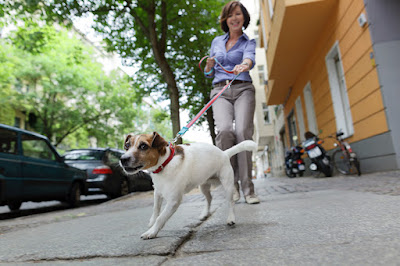Pulling on the belt can cause serious problems later on the road if it does not stop. It will be a war of domination between you and your dog. The dog realizes that he can pull on a leash during his walks and guide the show. Later or earlier, the dog will think, "If I can control that, why can not I control it?" I think you can imagine the problems that could lead to it.
The relationship between the dog and the owner is like a human relationship an association. Both parties give and receive when needed. When a dog starts running wild on his walks, he goes where he wants, does not listen to you, does not listen to you and does not pull on a leash, he feels strengthened. The dog begins to feel that the walk is like that and you are traveling alone.
It has to stop. The best I can prescribe for this problem is good, old-fashioned training. Expensive collars or harnesses only hide the problem. Believe me, I was there. I had a special harness to stop my dog pulling leash and avoid our walks. It went very well until I led her without a belt. As soon as he realized that the nasty thing that was stopping him from shooting was not there, it all happened like a rocket. It was because he had not learned that throwing was bad, he was only physically prevented. If you do not want the problem to recur, a solid exercise program is the best choice.
Anyone who has run with an ungovernable big dog knows the feeling. "If I stop for a second, I'll jump like a cartoon character at the end of the belt!" It's not fun and can be very dangerous. But with belt training, you can take control of your dog.
The first one is the first. With a big dog, it's even more important to choose the pack leader because he can dominate you. You do not want to get into a power struggle with your dog, so you have to teach him that you are responsible. You should really practice this at home, even before you walk around. Try some of these suggestions:
- Eat first. The pack leader would not allow a lower dog to eat in front of him, so you should not. Finish your dinner and feed it. And put in front of the bowl before filling. He will see that you control when he eats.
- Go through the doors, climb the stairs and enter the lifts in front of the dog. Never let him lead. This will only reinforce the fact that he is responsible. If he pushes you, turn him over and come back to where you were and try again.
- Never put yourself in a situation where the dog is watching you (eg from the top of the stairs). It is a classic dominant position.
If you have established yourself as a packaging manager, you should train with the leash. Remember to use a harness as the dog's neck will be less stressed when pulled to hold it. I also recommend using a 6 'leather strap. Put knots on the straps around each foot. Then hold the strap at the first or second bottom node. This forces the dog to stay near you instead of moving forward. From there you can try one of the belt training methods, eg. Pause, start or guess.
These are some of the most important things to learn obedience training your dog. If you want to train your dog successfully, you must always be patient and persistent.
References:
https://getfreedogtraining.com/how-to-stop-your-dog-from-pulling-on-the-leash/
https://www.freedogtrainingclasses.com/dog-obedience-training/



















